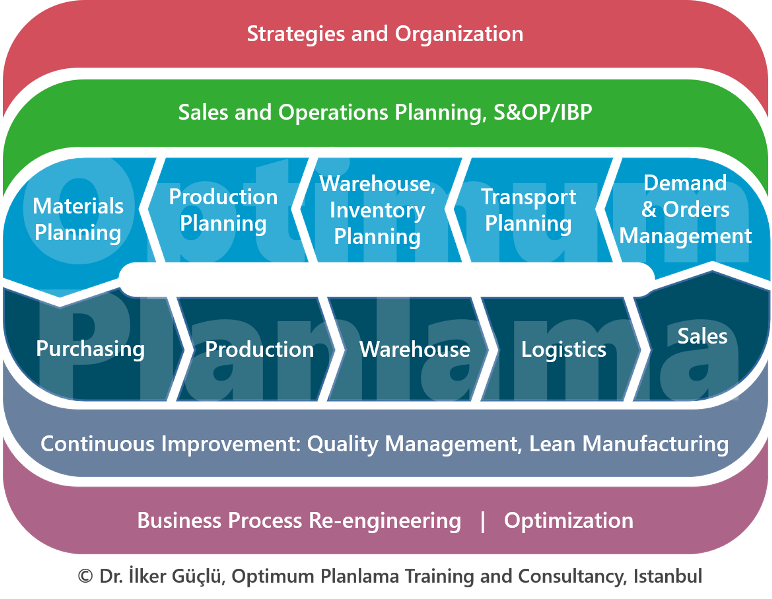|
The total of all
systematic
planning
activities
carried out by
an organization
in order to
forecast the
amount and
timing of the
demand for its
products (or
services) with
accuracy can be
called as
Demand Planning.
Many factors
affecting demand
should be
tracked and
recorded as part
of the demand
planning
process, to be
used to generate
forecasts.
What are the
factors
affecting demand
(and sales)?
There are many
factors that
affect customer
demand and
therefore sales.
Factors (data,
knowledge,
events, etc.)
that can be
considered in
order to prepare
a successful
demand plan are
summarized
below.
|
Internal
Factors |
|
● Past
demand
and
sales
● Price
policy
● Delivery
performance
● Quality
and
perceived
quality
● Logistics
and
manufacturing
costs
● New
product
launches,
delists |
● Product
life
cycle
stage
●
Sales
and
marketing
activities
● Promotions,
campaigns
● Ads,
ATL, BTL
advertising,
etc.
● Social
media
activities
● Management
quotas
and
targets
|
|
External
Factors |
|
● Existing, new
and potential
customers
● Seasonalities,
important
days/weeks
● Weather,
global warming,
natural events
● Changes and
trends in prices
● Market growth
● Economic
growth
● Competitors'
products, prices
● Competitors'
new products
● Delivery
performances of
competitors
● Competitors'
sales & marketing
activities
● Customers'
satisfaction,
preferences
● Customers'
investments,
plans, actions
|
● Activities of
customers'
competitors
● Activities of
customers'
customers
● Large projects
● Tenders,
wholesales
● Raw material,
commodity prices
● General
logistics & manufacturing
costs
● Political,
cultural factors
● Exchange rates
● Standards
● Legal
regulations
● VAT, SCT, PPI,
CPI, etc. rates
● Epidemics,
pandemics,
natural
disasters
|
Every
organization may
choose to add
its own and
unique factors
to the above
list. The
multitude of
factors makes
forecasting
difficult,
unless the
demand planning
process is
designed
effectively.
The factors
affecting demand
should be
identified,
prioritized and
grouped based on
their
similarities or
correlations (if
necessary) and
tracked
systematically,
within the scope
of demand
planning
processes.
What is a
demand forecast?
Forecasts
created within
the scope of
demand planning
activities are
called Demand
Forecasts.
Demand forecasts
include demand
quantities and
price
projections for
various levels
or groupings of
customers and/or
products for
future time
periods.
Forecasts are an
organization's
predictions
about how the
future will be
shaped.
Organizations
that do not
forecast, will
not able to
effectively plan
for their
future. All
short-, medium- and long-term
planning
activities,
should be based
on corresponding
forecasts and
demand plans.
For this reason,
the creation of
demand forecasts
with accurate
and reliable
systematics is
critical for a
successful
business.
Price changes or
promotional
activities
influencing or
shaping the
demand may alter
the
organization's
forecasts. An
organization
that includes
such activities
to its demand
planning
activites, may
call the whole
process as
Demand
Management.
"Demand
management is
influencing
the
level, timing,
and composition
of demand
to accomplish a
companys
business
objectives and
goals."
Philip Kotler
What are the
competitive
advantages of
planning demand?
Organization
that plans its
demand better
than competition
will be able to
more effectively
organize its
supply chain
operations
(especially
manufacturing
and purchasing),
offer their
customers sooner
and more
reliable due
dates, meet or
exceed committed
service levels,
expand market
share, product
and customer
portfolio due to
their pricing
and cost
advantages, and
increase overall
competitiveness.
In this context,
the demand
planning process
can be
considered among
critical
prerequisites of
an
organization's
sustainable
profitability
goals.
Majority of
companies facing
problems
in
production or
material
planning,
actually have
problems in
planning their
demand.
How to
forecast demand,
how to generate
forecasts?
A systematic
approach should
be followed when
designing demand
planning
processes within
an organization.
The process may
require
customizations
specific to the
organization's
needs.
In general, the
following
roadmap may be
implemented.
1. Defining the
process and its
objectives
The importance
of the demand
planning and
sales
forecasting
process for the
organization,
its place in
supply chain
planning,
inputs, outputs,
objectives and
performance
indicators are
determined.
2. Determining
forecasting
levels and units
Organizations
may choose to
forecast at
different
product levels
such as SKUs,
product groups,
families,
categories,
brands, etc.
Groupings may
also be formed
based on
locations,
regions,
customers,
customer
segments, etc.
3. Deciding
temporal process
parameters
Temporal
decisions, such
as how to choose
forecasts
horizons and
periods within
this horizon,
how often to
update
forecasts, play
an important
role in
structuring the
demand planning
process.
It is
important to
decide when NOT
to forecast
and what NOT
to forecast
4. Collecting
and preparing
data
Collecting
demand or sales
data of past
periods,
cleansing these
data,
determining the
influential
factors in the
past, and
enriching the
data with
historical
events are done.
Therefore, data
and information
inputs for
generating
demand forecasts
become ready to
use.
5.
Analyzing
data and
choosing
forecasting
method
Visualization of
data as graphs
aids the
forecast
analysis and
selecting the
appropriate
methods.
Statistical or
judgmental
methods are used
to generate
forecasts. These
methods should
be appropriately
integrated into
the process, and
the performance
of chosen
methods should
be monitored.
6. Incorporating
forecasts into
organizational
planning
processes
Demand Planning
(DP) is subject
to planning
activities
designed within
the scope of
processes such
as Budgeting,
Sales and
Operations
Planning
(S&OP/IBP),
Supply Chain
Collaboration
(CPFR),
Strategic
Business and
Investment
Planning, etc.
Adjustments on
demand forecasts
are also likely
at these stages.
7. Improving
demand planning
and forecasting
process
The overall
performance of
the process is
evaluated,
suggestions and
feedback are
collected and
process
improvements are
done, when
necessary.
What are demand
forecasting
methods?
Demand forecasting
methods are grouped into
two main groups:
1.
Judgmental
methods are formed
based on the knowledge
and experience of
managers, employees and
experts.
2.
Statistical
methods create
forecasts based on
statistical methods and
numerical calculations.
Some examples to
statistical methods are
listed below.
|
Statistical
Forecasting
Methods |
|
Averaging
Methods
●
Simple
Averages
●
Simple
Moving
Averages
●
Weighted
Moving
Averages
Smoothing
Methods
● Exponential
Smoothing
(ES)
● Holt's
Method
(double
ES)
● Adaptive
Exponential
Smoothing
(adaptive
ES)
● Winter's
Additive
Method
(additive
triple
ES)
● Winter's
Multiplicative
Method
(multiplicative
triple
ES)
|
Regression
Methods
● Simple
Regression
● Multiple
Regression
Others
●
Moving Medians
●
Seasonal
Indices
●
Decomposition
Analysis
●
ARIMA, ARIMAX
●
Bass
Method
●
Croston
Method
|
Company
X
does that, let's do the same...
Is demand planning same for every organization?
There are some basic methods in demand planning that are applicble to every organization. Particularly, standard spreadsheet software can be used to generate basic statistical forecasts.
However, issues and concerns like sales and marketing strategies, management of products or brands, manufacturing strategies, supply chain operations and relations, nature and patterns of customer demand, interpretation of past data, modeling of future actions and assumptions are not the same for every organization. Therefore such issues and concerns need to be considered from an organization-based, specific perspective.
In order to to plan for long-, medium- and short-term demands, organizations generate long-, medium- and short-term forecasts. These forecasts and plans are later used in capacity, manufacturing, purchasing, etc. planning processes.
Due to aforementioned concerns and reasons and may be many more, demand planning process systematics should be custom- or tailor-made for the organization.
Optimum Planlama
provides consultancy
services on designing
and reengineering
organizational Demand
Planning processes, as
well as supporting
tools.
|
|

|

|
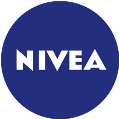
|
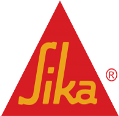
|
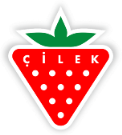
|
|
|
Red Bull Türkiye
S&OP/DP Project, 2022 |
Makbul
S&OP Project, 2021 |
NIVEA Beiersdorf
S&OP/DP Project, 2019 |
SİKA Türkiye
S&OP Project, 2018 |
ÇİLEK
S&OP Project, 2017 |
Contact us for more information on our consulting services regarding design and implementation of Demand Planning processes and related tools.
What
are the long-,
medium- and
short-term
forecasts?
Organizations
should have the
capacilities to
generate
forecasts at
different
periods,
horizons and
details within
their demand
planning
processes.
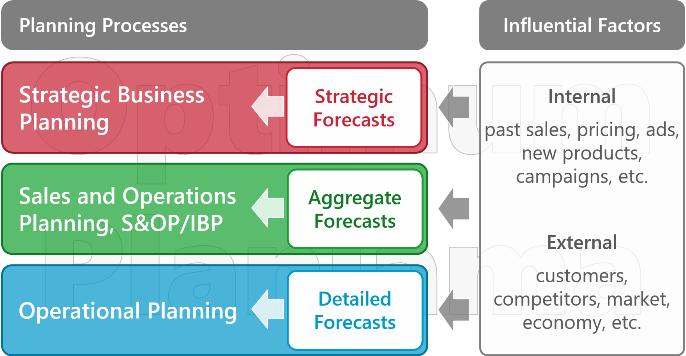
Long-term
forecasts are
strategic with a
2 to 10 year
horizon, usually
generated in
terms of total
sales
quantities, and
are used in
strategic
business and
investment
planning
decisions.
Medium-term
forecasts are
generated for
groups of
products (or
services) over
12 to 24 months
planning
horizons. These
forecasts are
used in
determining
aggregate sales
quantities and
revenue
projections and,
in turn possible
bottlenecks in
operations
(purchasing,
manufacturing,
warehousing,
logistics, etc.)
and financials
cash flows.
Demand plans and
forecasts at
this tactical
level are
generated within
the context of
Budgeting
and/or Sales
and Operations
Planning
(S&OP/IBP)
processes.
Short-term
forecasts are
detailed
forecasts
produced
generated in
terms of end- or
semi-finished
products to be
sold in a 3 to 6
months horizon.
They are used to
determine
operational
plans related to
purchasing,
production,
warehousing,
allocation or
transportation.
In addition to
values added by
the Sales and
Operations
Planning process
inside the
organization,
processes such
as
Collaborative
Forecasting,
Planning and
Replenishment
(CPFR) lead
the way to
supply chain
excellence,
through sharing
forecasts and
information
among supply
chain members.
|
|
Where is demand
planning within
enterprise
resource
planning?
Enterprise
resource
planning (ERP)
can be defined
as the
management of
main business
processes in an
integrated and
coordinated
manner within an
organization.
Main business
processes, in
this respect,
can be listed as
sales,
manufacturing,
supply chain,
purchasing,
finance, HR,
etc.
Demand planning
holds a critical
position within
the scope of
supply chain
management.
Demand planning
is directly
related to
planning of
logistics,
manufacturing
and purchasing,
as well as
finance.
Organizations striving for
excellence in
their supply
chains, and
therefore in
demand planning,
need certain
functional
planning
processes in
place. These
processes are
outlined below.
In this context,
Demand Planning
lies within
Demand
Management.
Organizations
need to identify
the deficiencies
and requirements
of their current
demand
forecasting and
planning
processes, and
then improve or
re-engineer
them.
Optimum
Planlama
offers
professional
training and
consultancy
services for
organizations to
excel their
supply chain
performance.
Dr. İlker Güçlü
|
Founder,
Optimum Planlama
|
Click
for resume
This
article
is to
provide
a
general
information.
The
aforementioned
may not
apply to
all
organizations.
Optimum Planlama training programs focused on
'Demand Planning' business processes are,
|
Demand Planning and
Sales Forecasting
training
program
(V4.0EN)
|
|
 |
|
Training
Goals
Forecasting customer
demand for products (or
services) has profound
effects on effectiveness
of critical business
processes, customer
satisfaction and
revenue. Generating
reliable sales forecasts
requires effective
demand planning and
forecasting procedures.
The main goals of this
program are providing
necessary knowledge on
advanced concepts of
demand planning
processes and basic
practical skills on
implementing numerical
forecasting techniques.
Verbal presentation, all
visuals and printed
material are in English.
Click for
details. |
Target Audience
Demand
Professionals
Sales
Professionals
Demand/Sales
Managers
Demand/Sales
Planners
Sales Operations
Account Managers
Marketing
Executives
Planning
Professionals
Budgeting
Responsibles
Logistics
Professionals
Supply Chain
Planners
Product Managers
Customer
Relations
|
Training
Modules
|
Day
1:
Forecasting Mechanics,
Basic Methods and
Accuracy |
Day 2:
Advanced Methods
and Process Improvement
|
|
What are the Factors
Affecting Sales and/or
Demand?
Who Generates and Uses
Forecasts?
Process Mechanics:
Horizons, Periods and
Frequency
Forecast Pyramid, Group
and Detail Forecasts
-DFUs
How to Formalize the
Forecasting Process?
Long, Medium, Close-Term
Planning Processes
In-Class Exercises
Forecasting Stationary,
Trending and Seasonal
Demands
Sales and Operations
Planning, S&OP/IBP
Process
Product, Demand and
Supply Planning in S&OP
Budget Gap Analysis,
Demand Prioritization
Supply Chain
Collaboration, CPFR
Forecast Accuracy, Basic
Indicators
In-Class Exercises
|
Quality
of Data,
Data
Cleansing
Moving
Averages,
Medians,
Weighting
Modeling
Nonlinear
Trends
Decomposition
of
Trends
with
Seasonality
Multiple
Regression,
ARIMA
Models
Exponential
Smoothing,
Holt-Winters,
Pegel
Classification
In-Class
Exercises
Lost
Sales,
Events
History,
Enriching
Data
Assumption
Management,
Top-Down,
Bottom-Up,
Middle-Out
Product
Entries/Exits,
New
Products,
Life
Cycles
Intermittent
Leads,
Promotions
Determining
Safety
Stock
Levels
Forecast
Accuracy,
Advanced
Indicators
In-Class
Exercises
|
Excellence
in your supply
chain
performance,

▲
TOP OF PAGE |















